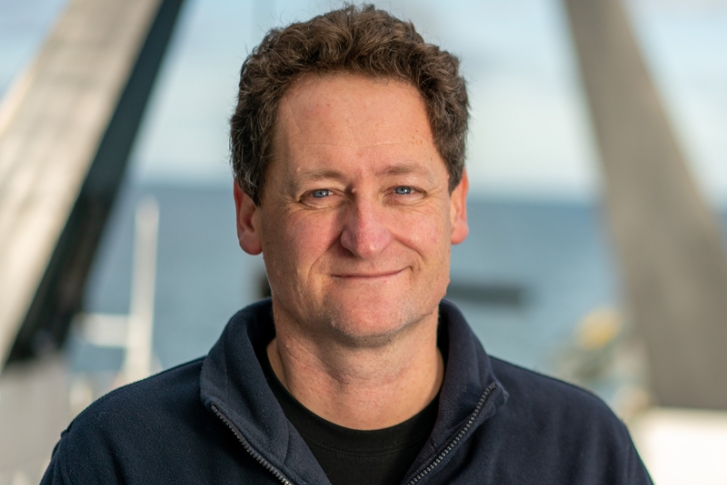ESP3 is the main tool at NIWA for quantitative analysis of acoustic data.
One of the challenges associated with using acoustic technologies to inform fisheries management is getting through the large datasets with efficiency and reproducibility. To address this challenge, researchers designed open-source software, ESP3, to process large hydroacoustic datasets.The software can be used to process data generated by active acoustic technologies such as echosounders that send out sound pulses underwater and measure the echo response (backscatter) to identify the organisms or structures in the area. ESP3 can be applied to echosounder data to inform biomass estimates, large-scale studies of marine ecosystems and marine geophysical applications. There is flexibility – parameters and algorithms can be changed and multiple different datasets can be integrated. The user needs to make decisions around these parameters to design a robust workflow that will then apply automated methods to do the quantitative analysis of the echo.To date, ESP3 is the only open-source software with a graphical interface to support processing of acoustic datasets. The open-source nature of the software is a key strength as it both guarantees transparency in the analysis pipeline and also opens up access to those groups that have been prohibited by cost. The user interface also opens up accessibility as it allows people who don’t have coding expertise to scrutinise and process acoustic data.
NIWA uses ESP3 to process all the hydroacoustic data captured from their fisheries acoustics surveys, supporting a broad range of research in fisheries, ecology and geophysics. There was clearly a demand for such software elsewhere as well, as it has been downloaded more than 1,600 times from 63 countries since it was first released in 2017. The researchers who developed the software have trained numerous people from around the world on how to use it, provided assistance to others, and take on board suggestions from users to improve the software and add functionality.
Developing open-source software to streamline the process of analysing acoustic data has facilitated the use of acoustic technology in Aotearoa New Zealand’s fisheries management system, such as in the survey of hoki in Raukawa Moana Cook Strait that fed into the stock assessment. The open-source software also supported increased uptake and use of acoustic datasets worldwide. Streamlined, open-source analytical tools such as ESP3 will play a crucial role in the future of sustainable fisheries management as we continue to increase our reliance on large datasets and recurring collection to inform management decisions in real time.
References
[1] Ladroit, Y. et al. (2020) ESP3: An open-source software for the quantitative processing of hydro-acoustic data, SoftwareX, 12, p. 100581.
[2] Ministry for Primary Industries (2018) Acoustic survey of spawning hoki in Cook Strait, New Zealand Fisheries Assessment Report 2018/12, p. 39.https://www.pmcsa.ac.nz/2021/02/21/software-to-streamline-acoustic-data…
Transceivers
Systems consist of a transceiver incorporating one or more transmitting and/or receiving channels based upon the Motorola DSP56002 digital signal processor, communicating with a general purpose UNIX computer for control. The transceiver has surface mounted and underwater versions. The surface version can be installed at any convenient location and connected to either hull-mounted or towed transducers. The underwater version is housed in a watertight cylinder 250 mm in diameter and 1 m long rated to a depth of 1,000 m. This version also incorporates a leak sensor and has provision for a variety of telemetry sensors including depth, pitch and roll and three-axis acceleration.
Control computer
The control computer is used to download software to the transceiver, manage echo sounder operation, data acquisition and storage. Communications are via Ethernet or a purpose-built high speed serial link. Any computer compatible with SVR4 UNIX or LINUX may be used.
Towed bodies
Towed bodies for marine use are of a flat-nosed torpedo shaped “heavy weight” design. They feature robust low-cost construction and an “opening nose” mechanism to allow them to flood and drain quickly to minimise the time taken crossing the air-water interface during deployment and retrieval. We currently have two models: a large one of 580 mm diameter and 3 m long, designed to house the underwater transceiver, together with a Simrad Model ES38D or EDO Model 6978 transducer (or similar sized or smaller transducer). The other model is a smaller version, 315 mm diameter and 1.68 m long, intended for use with a surface transceiver and a Simrad Model ES38-12 (or similar sized or smaller) transducer.Other towed bodies, suitable for use from small boats in lakes are also available.


